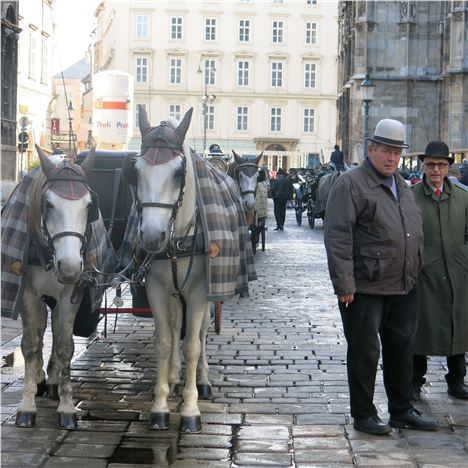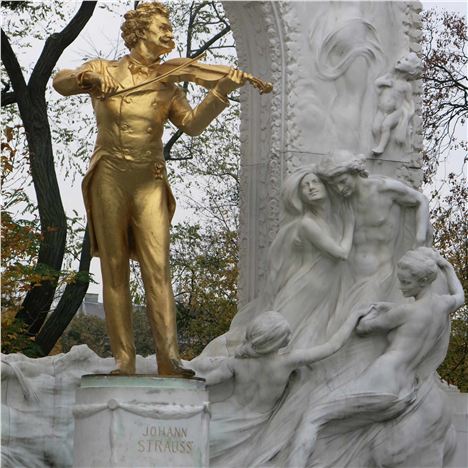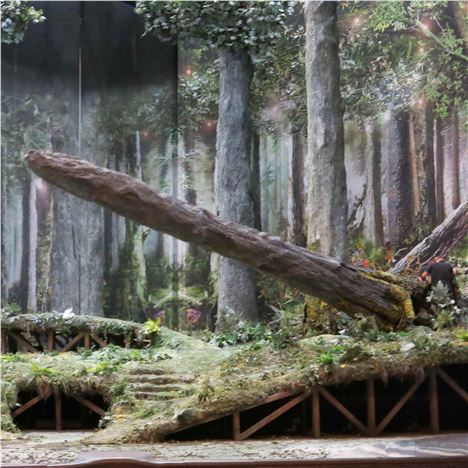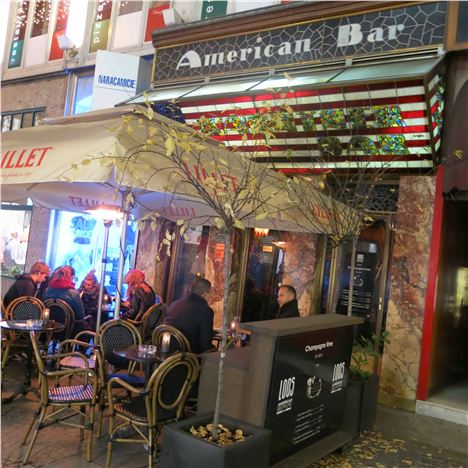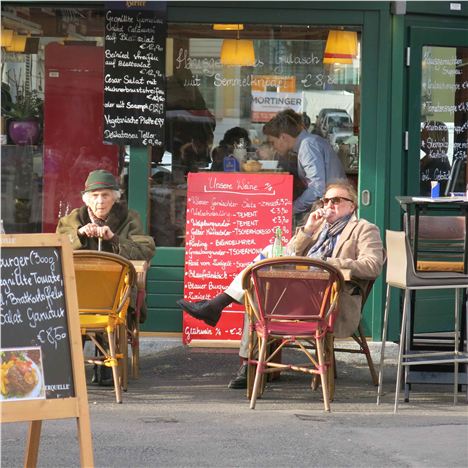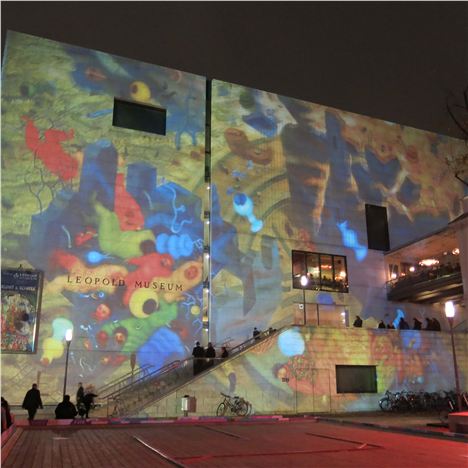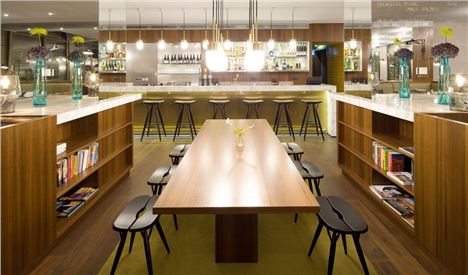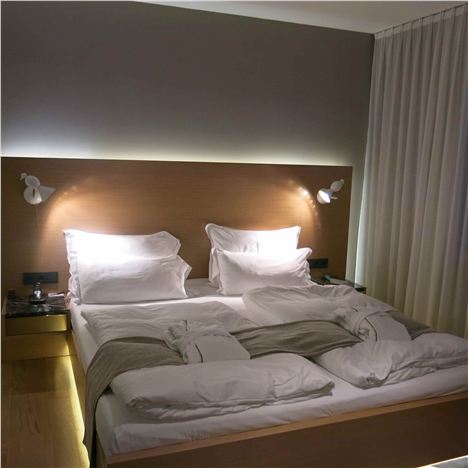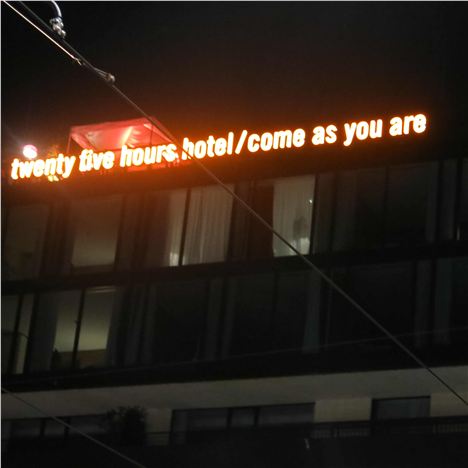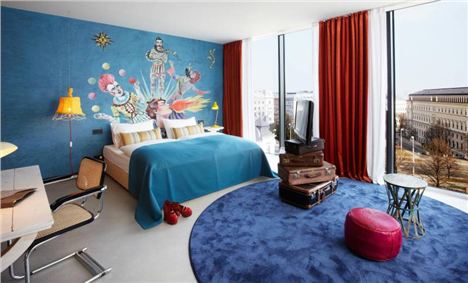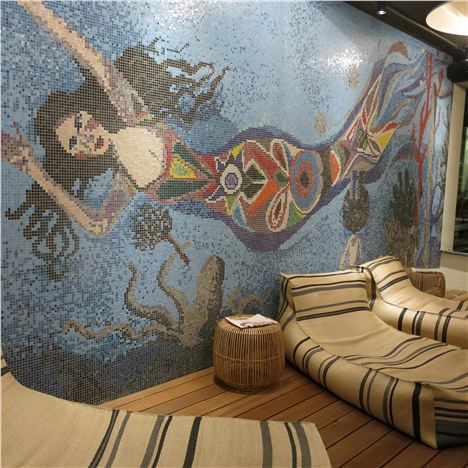IT’S heady up here on the Eisenrad, Vienna’s giant ferris wheel, best known from The Third Man movie. Remember Orson Welles, as the sardonic Harry Lime, ad libbing about cuckoo clocks and suckers to a wary Joseph Cotton? Chilling. Not just the old dialogue but today’s winds wobbling our stalled carriage as we pay airborne homage to the city of Lime and Freud and Mozart and Klimt... and, let’s not forget, Adolf Hitler for five obscure years before the Great War swept away the Austro-Hungarian Empire and the turbulent 20th century really began.
'Figlmüller is famous for for serving Schnitzels so huge they spill off the plate – in truth it was a challenge to nibble my way through the entire thin discus of fried, breadcrumbed pork'
We are turning again now and, as we descend to the Prater Park with its tawdry amusements and smell of cheap cooking fat, we soon lose sight of the distant spire of St Stephan’s Cathedral in the elegant Old Town and the rather less elegant Sixties spike of the Donauturm, an 827ft observation tower across the Danube, off which you can bungee jump, if you so wish. Probably not on an icy day like this.
We had taken in that modern quarter the previous day. It was the furthest flung stretch of our Big B Bus Tour, a slick hop on-hop off, all-day shuttle service with a recorded, and surprisingly enlightening, commentary on the city’s history, culture and characters. Only caveat: get stuck in traffic and a Johann Strauss loop tape kicks in (I was humming the Radezky March in my sleep). We paid 16 euros a head for the standard Red Route, but there’s also a Blue Route, which focuses on the Palaces of Schonbrunn and Belvedere. Our more central tour really gave us our bearings. After that it was trams and shoe leather.
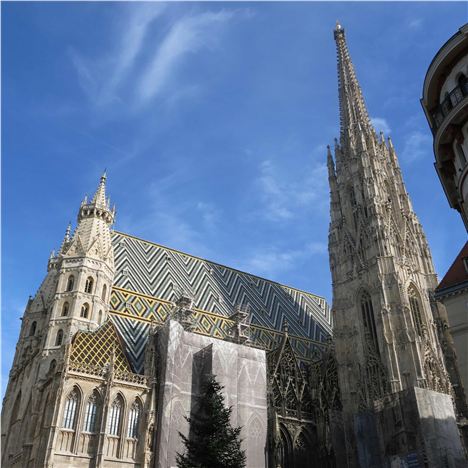 The Stephansdom (Cathedral); below, the Square's carriage drivers on duty
The Stephansdom (Cathedral); below, the Square's carriage drivers on duty
The following sketches of our adventures may not have the dazzle or sweeping lines of a Klimt or Egon Schiele, and certainly not the emotional and intellectual baggage all the city’s creatives have carried with them, but sweet surprises filled our five days in Vienna – we flew from Manchester with Jet2.com – and what more could you want from a city break? But I’m rhapsodising already!
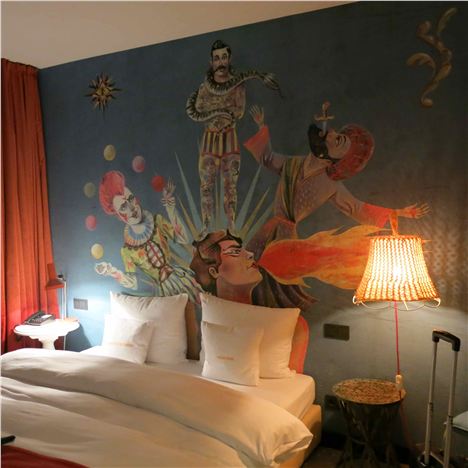 Our suite at the 25 Hours with circus tricks; below, Johann Strass statue
Our suite at the 25 Hours with circus tricks; below, Johann Strass statue
Save the Last Waltz...
It was hard to resist dipping in to the schmaltzy world of Johann Strauss waltzes and Mozart’s Greatest Hits. Why, there’s even a Herren und Damen in the underground precinct between the Opera and Karlsplatz that belts out the Blue Danube (note: that river is invariably muddy grey). We chose the more alluring setting of the Auersperg Palace, conveniently across he road from our first hotel, the 25 Hours, to attend a concert by the Wiener Residenz Orchester. It’s very much on the Danube cruise and coach party circuit, encompassing 18th century costume, ballet, opera arias and orchestral lollipops featuring an authentic Stradivarius. Mozart before the interlude fizz was a mite routine but the Strauss afterwards was clap-along jolly.
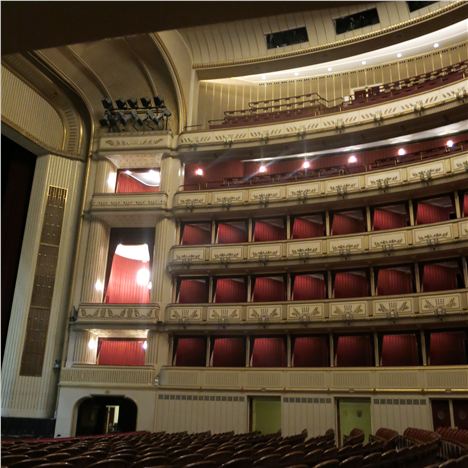 The magnificent Staatsoper; below putting up the Vixen set
The magnificent Staatsoper; below putting up the Vixen set
An afternoon at The Vienna Opera
Now for something more serious. Call us cheapskates but with remaining tickets for Janacek’s Cunning LIttle Vixen topping 200 euros and our reluctance to queue for bargain on-the-night ‘standing only’ tickets, we settled for a guided tour of the Wiener Staatsoper. Highly recommended at 7.50 euros for adults. You get a fascinating peek behind the scenes, while the ornate public rooms are thronged with the busts and musical ghosts of Mahler, Wagner and Herbert Von Karajan.
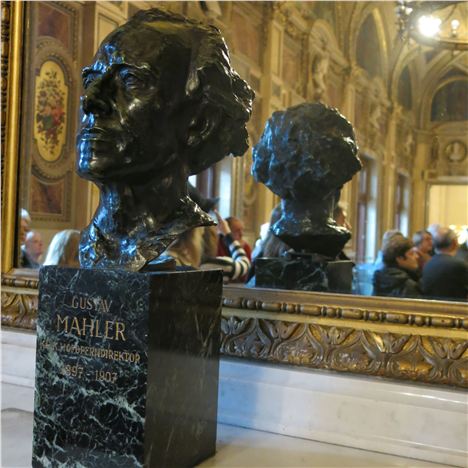 Composer Gustav Mahler was musical director at the Staatsoper
Composer Gustav Mahler was musical director at the Staatsoper
Aim for Amadeus
Staying with Vienna’s musical greats, there is a Beethoven museum out in Heiligenstadt, though it’s more fun to toast the great composer in the Mayer am Pfarrplatz wine tavern – he once lived in the historic building. Since it is more central, tucked just behind the Stephansdom (Cathedral), we instead opted for the cannily arranged Mozarthaus, where The Marriage of Figaro was written when the composer was prospering for a while. After his fall from grace he was buried in the Saint Marx Cemetery, but no grave is marked.
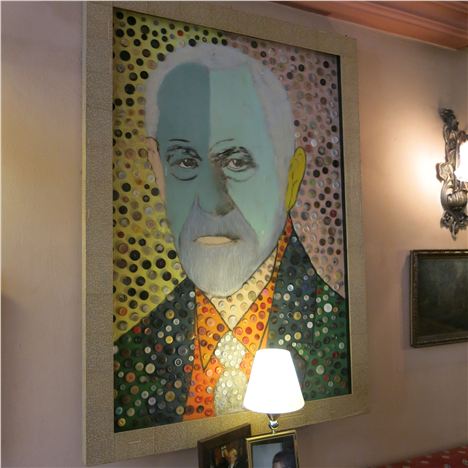 Freud with buttons on in the Cafe
Freud with buttons on in the Cafe
In the Realm of The Unconscious
The other famous house/museum I’d recommend is Sigmund Freud’s. Berggasse 19 was the home of founder of psychoanalysis’ from 1891 until 1938, when he fled from the Nazis to London, where the famous couch still lives. His library and many personal artefacts remain in an atmospheric place of pilgrimage (it is also an important study centre). The quirky Freud Cafe next door, with portraits of Viennese notables made out of buttons, is a good place to recovery your sense of self!
 Eduard Winter gets down to the bare bones in the Narrenturm
Eduard Winter gets down to the bare bones in the Narrenturm
The skull beneath the skin in the Fools’ Tower
Follow up Herr Freud’s cerebral obsessions with an encounter with all the malformed horrors of the human body in the seriously morbid Pathologisch-Anatomisches Museum, dating back to 1796. Its vast jumble of exhibits is housed in the round Narrenturm (Fools’ Tower), the former century psychiatric ward of the General Hospital (today it’s a lively university campus). We were shown around by curator Eduard Winter, who is attempting to rearrange all the bones and specimens in formaldehyde into some kind of order. Not for the faint-hearted. Freud once had rooms here as a student.
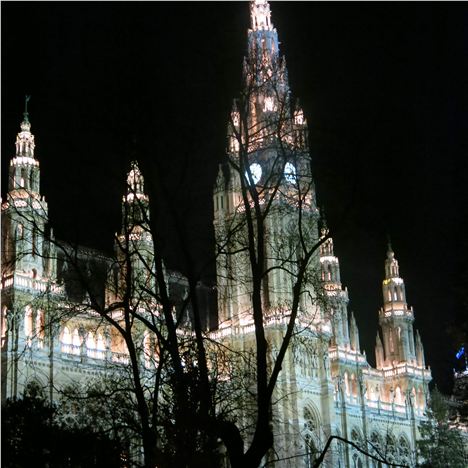 The Rathaus (Town Hall) is spectacular by night
The Rathaus (Town Hall) is spectacular by night
Take a Bummel around after dark
OK, it was a good season to be in Vienna with the Christmas Markets setting up, but any time of the year the old Hapsburg capital gets lit up after dark. The Rathaus (Town Hall) and the Hofburg Palace are the most spectacular floodlit edifices. The hip Museum Quarter complex is lively when the market are on as is the cobbled maze of streets in nearby Spittelberg with its many bars. Bummel by the way is a German word that means “aimless saunter”. Perfect.
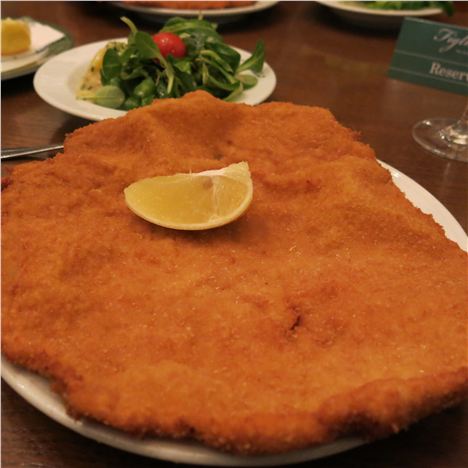 The mighty overlapping Schnitzel was all too much for me
The mighty overlapping Schnitzel was all too much for me
Perils of the Overlapping Schnitzel
It’s like going to Naples and not eating a pizza. When in Wien you have to tackle a Wiener Schnitzel, we were told. Hence we waited patiently to get into welcoming old Figlmüller, famous for over a century for serving Schnitzels so huge they spill off the plate. In truth it was a challenge to nibble my way through the entire thin discus of fried, breadcrumbed pork (veal is less common these days).
Let Loos on Old Vienna's best bar
It was a boon that we had half an hour free before Figlmüller could spare us a table. Otherwise we might never have squeezed into the tiny, tiny Loos American Bar just off the pedestrianised main shopping drag of Kärtnerstrasse. Architect Adolf Loos is famous for cocking a snook the ornate old Hapsburg capital by inserting an outwardly frill-free building opposite the Palace. The Loos Haus is today a bank; the utterly gorgeous bar he built in 1908, is much more fun. Cocktails are outrageously good – or is it just thanks to the setting, mirrors amplifying the tiny, warm space with its coffered ceiling and green and white floor tiles.
 Cafe Central with likeness of Peter Altendorfer
Cafe Central with likeness of Peter Altendorfer
We need a coffee after all that
Once you’ve lost your Schnitzel virginity it’s time to get off with Kaffee mit Kuchen (coffee and cake, inevitably with a swirl of whipped cream). The choice of historic coffee houses is wide, including the Cafe Demel, opened in 1786 and famous for serving Emperor Franz Joseph’s wife Sisi her favourite sweet violet sorbet. Impressive, but I can’t resist the Cafe Central in the Palais Ferstel. Nor can the throngs of locals and visitors alike (it serves a thousand cups of coffee a day in its elegant domed dining room). Once it was the preserve of intellectuals – one, the 19th century writer Peter Altenberg, remains unnervingly in statue form by the counter – and politicos such as the exiled Lenin and Trotsky and, from the other corner, Hitler. The Viennese have their own names for coffee specialities – to get a play-it-safe white Americano order a Verlängerter (a lengthened one).
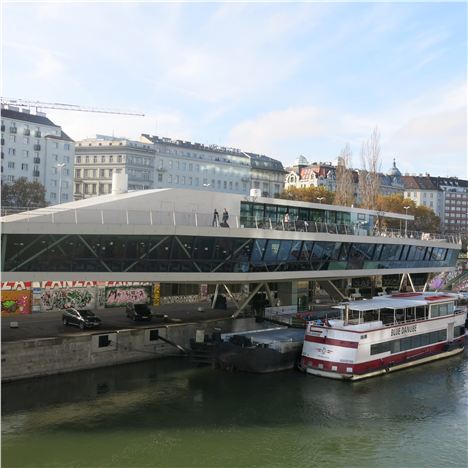 Motto am Fluss so shipshape down by the trendy Danube Canal
Motto am Fluss so shipshape down by the trendy Danube Canal
If you really don’t want Schnitzel or Strudel
Motto am Fluss is a much-talked about organic all-day eaterie/bar in a boat-shaped mooring station building on the banks of the Danube Canal near where the hipsters frequent pretend beach bars. Motto’s food is light and regional, the ambience 50s Venice. Affordable and recommended. By general consent the best restaurant in Vienna is the Steireck, which regularly features in Restaurant Magazine’s World’s Top 50. Its little sister establishment is also in the Stadtpark (turn left at the gold-painted Johann Strauss statue someone’s bound to be photographing. Not so the nearby bust of a greater composer, Anton Bruckner – no one has bothered to swill the bird shit off) The more casual Meierei majors in cheeses –120 to choose from – and an array of cakes and pastries plus a few simple mains. Grab a table overlooking the placid waters of the Wienfluss and imagine you are in the Vienna Woods.
 Preparing for Christmas ar Meinl am Graben; below Naschmarkt society
Preparing for Christmas ar Meinl am Graben; below Naschmarkt society
Or you could just grab some grub for a picnic
You can’t go wrong at the fabulous food hall called Meinl am Graben, at the end of that pedestrianised ‘tributary’ of Kärtnerstrasse. Otherwise check out the food stalls of the Naschmarkt, which are threatening to be overwhelmed by the number of cafes. I was lovingly trying to capture a barrel of pickled cucumbers for posterity when the stallholder screamed “No pictures of my gherkins, Mein Herr!”. The Viennese can be a mite volatile!
 Secession Building; below, the Leopold Museum gets lit up
Secession Building; below, the Leopold Museum gets lit up
And so to the Art capital with a Capital A
The Naschmarkt is just across the road from the Secession Building – the white exhibition hall that was the originally the architectural manifesto for Vienna’s fin de siecle art movement – the base camp for Gustav Klimt and his crew to dismantle the city’s cobwebbed shibboleths. But the best place to get a real perspective on the city’s legendary, if febrile, golden age in arts, music and society is the Leopold Museum in the Museum Quarter. It's just one of Vienna’s amazing roster of art galleries – my stand-out is the Breughel collection at the Kunsthistorisches Museum. Ostensibly The Leopold is devoted to the Egon Schiele works donated by the collector Rupert Leopold, but a number of these (the ones featuring gaunt folk with pubic hair) appeared to have decamped to London for the current Schiele exhibition there. The Leopold’s revelatory ‘Vienna 1900’ show more than made up for the absences.
 The remarkable Hundertwasserhaus
The remarkable Hundertwasserhaus
And Architecture with an even more monumental Capital A
From the glorious palaces that line the city’s fabled Ringstrasse (grab a circular tram round this landmark boulevard celebrating its 150th anniversary), via the fascinating legacy of art nouveau urban planner Otto Wagner to the surreal apartment block that is the Hundertwasserhaus, opened in 1986, the city offers an immense amount to gawp up at.
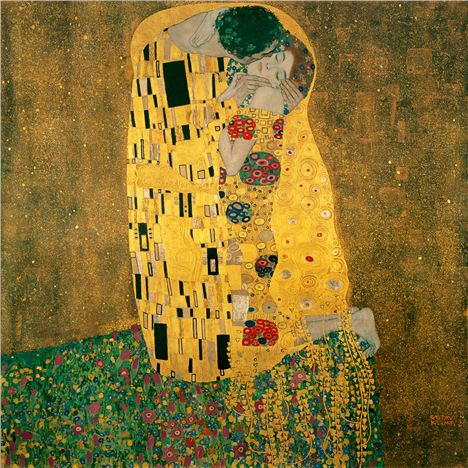 Gustav Klimt's The Kiss; below, so we bought the mug!
Gustav Klimt's The Kiss; below, so we bought the mug!
Sealed with The Kiss
 ‘A kiss is just a kiss’ says the lyric of As Time Goes By. Not so Gustav Klimt’s most famous painting, its beauty replicated on millions of tourist souvenirs from mugs and fridge magnets to polyester leggings in Vienna alone. The real thing is in the unashamedly Baroque Upper Belvedere Palace and well worth the uphill walk from the city through formal gardens (main picture). Face to face, all the familiarity doesn’t matter – the sumptuously ornate embrace envelops you in the moment. As does Vienna, if you give it time.
‘A kiss is just a kiss’ says the lyric of As Time Goes By. Not so Gustav Klimt’s most famous painting, its beauty replicated on millions of tourist souvenirs from mugs and fridge magnets to polyester leggings in Vienna alone. The real thing is in the unashamedly Baroque Upper Belvedere Palace and well worth the uphill walk from the city through formal gardens (main picture). Face to face, all the familiarity doesn’t matter – the sumptuously ornate embrace envelops you in the moment. As does Vienna, if you give it time.
We stayed at The Guesthouse and 25 Hours – lovely laidback lodgings
A word of warning. The city has its share of stuffy hotels and some that because of their heritage status are quite intimidating. Take the Sacher, gilded home of the Sachertorte. It fought a seven year war with the aforementioned Cafe Demel over which could use the word ‘Original’ when flogging that overrated chocolate and apricot jam cake. The hotel boasts flagpoles and flunkies in abundance; we were happy to base ourselves in its cooler near neighbour, The Guesthouse, open barely a year.
Ideally situated behind the Opera House and the Albertina art gallery, this Conran-designed boutique bolthole oozes discreet class. What if this guest couldn’t recognise modern design classics by the likes of Wittmann and Oswald Haerdtl? I was glad to lounge on them or stow my spare socks in them. Every inch is packed with low key hi-tech and understated cool, but it doesn’t shirk comfort; witness the enormously comfortable beds.
A huge plus (and yes reader, I did a double take, too) each guest room comes with four complimentary bottles of quality Austrian wine, which are replaced each day if you have swigged them. Don’t ask!
Less restraint was needed at our other Vienna billet, the 25 Hours, a 15 minute walk away beyond the Museum Quarter. Not one to hide its red lights under a bushel, this seven storey hipster haven screams in neon as you approach: “We’re all made here”. We’d enjoyed its nautically themed sister hotel in Hamburg’s Hafen City; the Vienna version revels in circus motifs. Our corner Panorama Suite on the sixth floor boasted terrific views but we couldn’t take our eyes off the fire eater, sword swallower, juggler and snake-draped strongman emblazoned on the wall behind out king-size bed.
With a casual Italian restaurant featuring a wood burning pizza oven and seriously good charcuterie on the ground floor, kooky public areas and free bike hire, the Mermaid’s Cave sauna and an uber-cool rooftop terrace bar, it ticks all the boxes for a generation of residents and visitors for whom cakes, waltzes and the Hapsburg legacy aren’t a prime attraction.
Fact file
The Guesthouse, Führichgasse 10, 1010 Wien.
39 rooms and suites over eight storeys. Rooms cost 230 euros for a Superior Courtyard, 280 euros for a Deluxe Opera View, 380 euros for a Suite and 580 euros for a Maisonette Suite. The in-house Brasserie & Bakery is open from 6.30am-midnight and serves breakfast all day as well as varety of mains, salads and pastries later in the day.
25 Hours, Lerchenfelder Straße 1-3, 1070 Wien.
217 rooms, including 34 suites with kitchenettes. Rooms cost from 110 euros for an m-room to 190 euros for a Panorama Suite. The 12 Panorama Suites are open-plan living. Each has a fully equipped kitchenette and floor-length windows with spectacular views. The 1500 Foodmakers Restaurant serves American-inspired Italian food. Open noon-1am weekdays and from 6pm at weekends. The rooftop Dachboden describes itself as “a mixture of beach bar and parliament cafeteria”. Max number of guests 120, no reservations.
The Vienna Card
This costs 18.90 euros for 48 hours and 21.90 euros for 72. It provides more than 210 (modest) discounts at museums and sights, theatres and concerts, in shops, cafés, restaurants, the ‘Heurige’ wine tavern, and provides free travel on Vienna's public transport system for the booked periods. There are also family tickets
A regular 48 hours ticket for public transport (no discounts at museums etc) costs 13.30 euros, the 72 hours one 16.50 euros, so so whether the Vienna Card pays off depends on how much you're going to take advantage of the discounts.
For the best online Vienna tourism information visit www.wien.info/en.
Getting there
Leading leisure airline Jet2.com offers friendly low fares, great flight times, and a generous 22kg baggage allowance to Vienna Airport from Manchester Airport.
Flights start from £49 one way including taxes.
For more information visit www.jet2.com.
Neil Sowerby parked at Manchester Airport. For full details of parking there visit this link.











